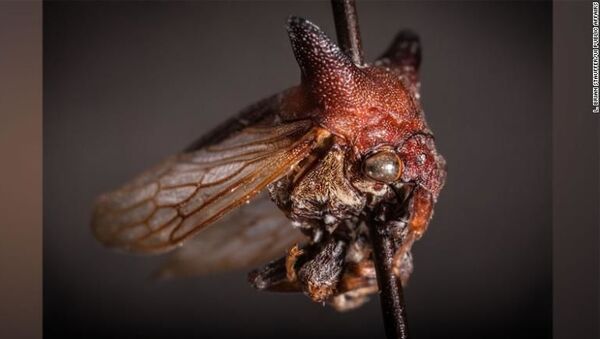Discovered in Nicaragua, a new treehopper species with spiky horns and an unusual appearance has been named “Kaikaia gaga” after American pop singer Lady Gaga.
Brendan Morris, an entomology graduate student at the University of Illinois at Urbana-Champaign, who studied and named the new insect, said he named the bug after Lady Gaga for the artist's “flamboyant, shape-shifting style”.
A new treehopper species was named "Kaikaia gaga" after @ladygaga: "If there is going to be a Lady Gaga bug, it's going to be a treehopper, because they've got these crazy horns, they have this wacky fashion sense."
— Gaga Daily (@gagadaily) March 10, 2020
the resemblance is uncanny! pic.twitter.com/x87KMvB35X
“If there is going to be a Lady Gaga bug, it's going to be a treehopper, because they've got these crazy horns, they have this wacky fashion sense about them,” Morris said in a press release. “They're unlike anything you've ever seen before”.
According to Morris, who borrowed a specimen from the Carnegie Museum of Natural History in Pittsburgh, Pennsylvania, to study along with nearly a thousand other treehoppers, the Kaikaia gaga has several unusual characteristics, including strange sex organs and spiky horns.
استلهاماً من أزياء نجمة البوب الأمريكية ليدي غاغا الغريبة.. إطلاق اسمها على حشرة غريبة المظهر بقرون غير عادية موطنها نيكاراجوا، ما دفع عالم حشرات بجامعة إلينوي لتسميتها "Kaikaia gaga" بعد وضعها في متحف بيتسبرغ، تكريماً لشخصية مشهورة#غرائب #LadyGaga #منوعات #حول_العالم pic.twitter.com/yTmCGhZB2h
— 24.ae | منوعات (@24Entertain) March 11, 2020
Kaikaia gaga feed on plants and communicate by creating vibrations that travel along plant stems.
“It blows my mind that a group that is roughly 40 million years old has so much diversity of form – diversity, I would argue, that we don’t see in any other family of insects,” the researcher said.
The treehopper specimen was originally collected some 30 years ago from a tropical forest on Nicaragua's Pacific coast. Although treehoppers populate most forests on Earth, they are not well-known primarily due to their diminutive size.

